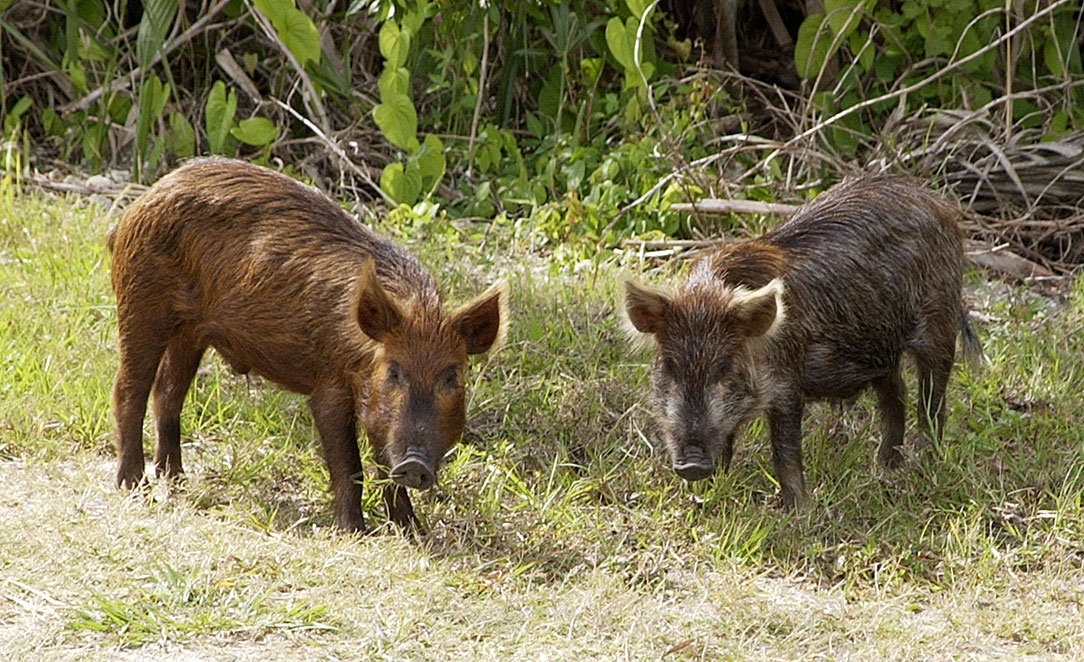The Montana and Washington invasive species councils have joined forces to stop wild pigs from crossing borders.
The two councils issued a report with recommendations and best management practices aimed at helping federal, state, provincial and local landowners manage wild pigs in the western United States and Canada.
”Wild pig populations are expanding in the western provinces of Canada and in the United States,” said Stephanie Criswell, coordinator of the Montana Invasive Species Council. “We are at a unique point in time where we can work together to prevent Canadian wild pigs from spreading across borders into unaffected states like Montana.”
Feral pigs resemble domestic pigs but are far more destructive. They prefer habitats with an abundant supply of water and dense cover. They are aggressive and may be extremely destructive to fields, fences and facilities. Their wallows can negatively impact ponds and wetlands. They can strip a field of crops in one night and pose a threat to ground-nesting birds and some endangered species. They also can transmit diseases and parasites, such as pseudorabies, brucellosis, and tuberculosis, to livestock and people.
“Feral swine are one of the most destructive invasive species in existence,” continued Criswell. “Once established, they cause millions of dollars in agricultural, environmental and property damage. We do not want them in Montana and this effort was a key step in coordinating with neighboring states and provinces on the issue.”
In early 2020, the two invasive species councils convened a working group of more than 40 federal, state and Canadian feral swine experts to discuss challenges and opportunities to prevent feral swine along interstate and international borders. Finalized this month, the report includes 22 recommendations that address five strategic areas of feral swine management.
Recommendations include standardizing communications to the public, expanding monitoring networks by partnering with non-traditional organizations such as hunting groups, and formalizing notification protocols for reports that will be shared between state and provincial authorities along the international border.
“Feral swine don’t respect international borders or jurisdictions,” said Justin Bush, coordinator of the Washington Invasive Species Council. “This process brought everyone in the neighborhood together to address this important issue.”
The complete report Feral Swine Transboundary Workgroup Findings and Recommendations says: “Natural resource managers throughout North America have identified feral swine as a significant challenge. This invasive species has emerged as a major environmental and economic concern as populations have exploded. They exist across North America with population estimates over six million. Populations are expanding in the western provinces of Canada and are on the rise in the United States. Existing data from the U.S. and Canada on the distribution of feral swine have confirmed that animals have been detected near the international border and the potential for transboundary movement is very possible.
“Western states without established populations have worked vigilantly to prevent introductions or to eradicate feral swine that appear on the landscape. Western states have an opportunity to enhance prevention efforts by partnering with Canadian provinces and each other to discuss challenges and opportunities to preventing and stopping feral swine along interstate and international borders.”
The Montana Invasive Species Council is a statewide partnership working to protect Montana’s economy, natural resources and public health through a coordinated approach to combat invasive species.
Created in 2006, the Washington Invasive Species Council is tasked with providing policy-level direction, planning and coordination for combating harmful invasive species throughout the state and preventing the introduction of others that may be harmful.

